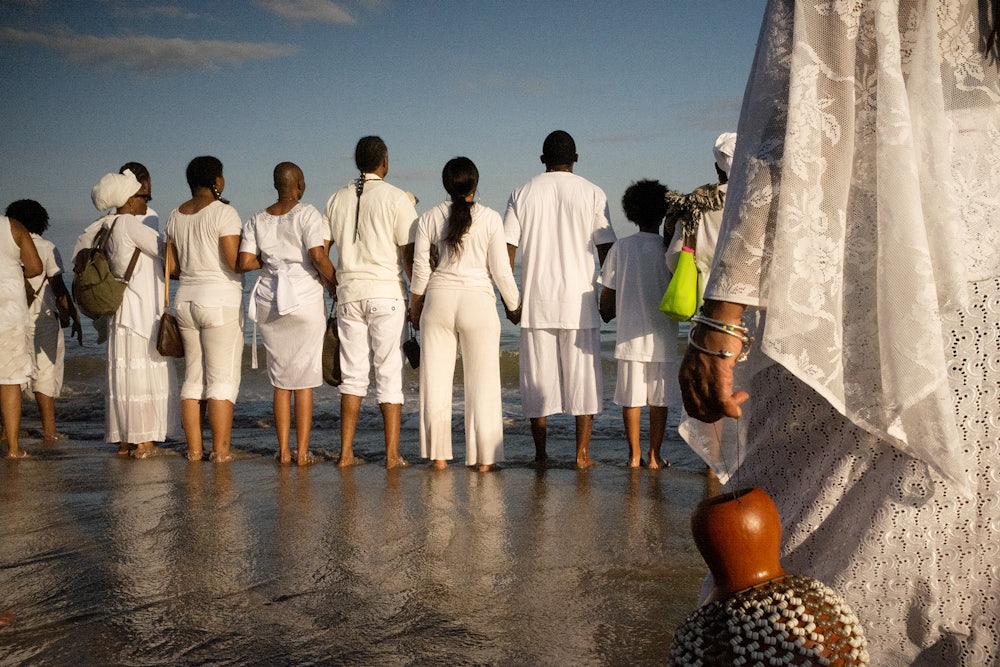On a hot summer’s day, the subway ride from Harlem to Coney Island can take more than ninety minutes, and on the second Saturday of June, a group of men, women, and children dressed entirely in white make the long journey to stand, hand-in-hand, at the edge of the shore. As the Cyclone roars in the background, they cast flowers into the surf in remembrance of the nearly 13 million Africans who were shipped as cargo across the Atlantic, and the two million who died onboard. Michael Webster has photographed this ceremony since 2005, called by its organizers a “Tribute to Our Ancestors of the Middle Passage at Coney Island Beach.” The leg of the slave trade between the African and North American coasts, the Middle Passage was a tortuous journey that could last more than two months, where crews could brutalize captives at sea, far away from the eyes of the law. During the earliest days of the slave trade, these crimes rarely registered with whites, until several high-profile cases thrust the Middle Passage into the public sphere: The Zong trial (1783), in which 133 Africans were thrown overboard so the ship’s captain could collect insurance on their deaths, and the United States v Amistad (1841), in which an onboard revolt of captives in Cuba led to a Supreme Court case which authorized their release as free men. The Zong would act as a moral referendum on slavery in the United Kingdom, and the Amistad forced an unprecedented national debate on the ethics of the slave trade in the United States.
Miles of ocean horizon provide the backdrop to remember those buried at sea. During the ceremony, some years, there is June gloom and the participants bring white umbrellas; other years the day is bright and sunny, and chairs are arranged on the beach for a full afternoon program. Webster has now attended the event for nearly twelve years, but he doesn’t always photograph it. “I’ve never been comfortable invading people’s privacy,” he said. “It wasn’t unusual for people to ask me politely, but with a skeptical tone, why I was photographing the tribute. This was my answer: It was a beautiful event that should be documented so as to not be forgotten. I was sincere, and everyone who asked seemed to accept it.”
Michael Webster takes over the New Republic’s Instagram this week to share photographs from the “Tribute to Our Ancestors of the Middle Passage at Coney Island Beach.”

